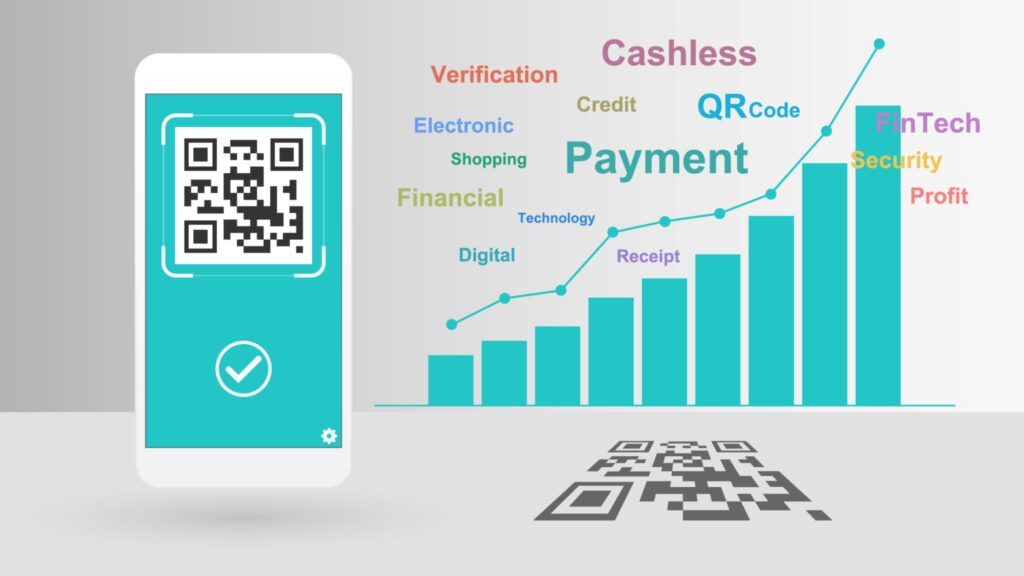The rapid advancement of financial technology is fundamentally altering Cambodia’s economic reality. One of the most telling trends is the widespread preference for payments made via QR Code scanning over the use of large denomination banknotes (particularly $50, $100, and 100,000 Riel notes). Observations show that merchants are increasingly happy to accept digital payments, contrasting sharply with their previous hesitation toward high-value cash.
This analysis explores the reasons driving this strong trust in digital systems, the security concerns they resolve, and the new vigilance required from both consumers and vendors.
I. Why QR Codes Earn Higher Merchant Trust
The primary factors driving merchant confidence in QR Code payments relate to security, convenience, and operational efficiency.
1. Eliminating Counterfeit Cash Risk (Security and Trust)
Large banknotes are the main targets for counterfeiting. Most small merchants lack the equipment or expertise to reliably authenticate high-value currency.
- Bank-Backed Security: When a transaction is processed via QR Code, the funds are transferred securely through the regulated banking system, overseen by the National Bank of Cambodia (NBC). This process guarantees the money is 100% genuine, eliminating all risk of counterfeiting.

2. Solving Operational Headaches and Cash Quality Issues
Digital payments efficiently resolve the transactional friction inherent in cash handling:
- Precision and Change: QR Code payments allow for the transfer of the exact amount (e.g., $4.85), eliminating the need for merchants to scramble for change—a common frustration when a customer pays a small bill with a $100 note.
- Note Condition: Merchants must often reject notes that are old, torn, or stained, as these are difficult to spend or deposit. Digital funds are immune to physical damage or quality checks.
3. Enhanced Cash Management and Personal Security
For vendors, digital payments simplify daily business operations:
- Safety from Theft: Reducing the volume of cash on hand mitigates the risk of theft or loss, particularly for businesses operating late hours.
- Simplified Accounting: Funds received via QR Code are automatically recorded in the bank account, streamlining sales tracking and daily accounting without requiring manual cash counts.
II. ⚠️ Essential Knowledge and Caution for Digital Users
Despite the high security of the QR Code system itself, both merchants and consumers must remain vigilant against fraud resulting from human error or deliberate deception.
1. Key Risks Targeting Merchants (Vendors)
Merchants accepting QR Code payments are most susceptible to scams involving fake confirmation proof:
- Fake Transaction Receipts: Scammers often scan, but then display a phony “successful transfer” screen—which might be a stolen screenshot or an image faked with editing software—without actually completing the transfer.
- Caution: Never rely solely on the customer’s phone screen. Merchants must wait for the notification sound or SMS confirmation from their bank, or personally verify the funds’ arrival in their banking app before releasing goods.
- QR Code Swapping: Criminals may attempt to cover the legitimate QR Code with their own code, diverting customer payments to their personal account.
- Caution: Merchants must secure their QR Code display and regularly inspect it for signs of tampering.
2. Common Errors Affecting Consumers (Buyers)
Consumers primarily face risks related to technical mistakes:
- Currency Confusion: When using services like the NBC-backed Bakong System (Internal Link Opportunity), buyers must ensure they select the correct currency. Transferring from a Dollar account to a Riel QR code (or vice-versa) can incur an unexpected exchange rate loss.
- Caution: Always check the currency (KHR/៛ or USD/$) and the recipient’s name before confirming the transfer.
- Incorrect Transfer Details: Errors can occur by mistyping the amount or accidentally scanning the wrong QR Code from a nearby business.
- Caution: Before pressing “Confirm Transfer,” verify the recipient’s name and the amount meticulously. Confirmed transactions are frequently irreversible.
Conclusion: Cambodia’s Path to a Digital Economy
The preference for QR Codes by Cambodian merchants is a clear indicator of a profound behavioral shift. The security and convenience offered by financial technology successfully outweigh the risk and complexity associated with handling large banknotes.
Cambodia is rapidly progressing toward a robust digital economy that is faster, easier, and inherently safer. However, continued public education and high vigilance are the necessary counterparts to this technological convenience, ensuring both businesses and consumers can confidently reap the benefits of the digital era.
READ MORE: Fintech Cambodia 2025: The Rise of Digital Banking & E‑Payments

